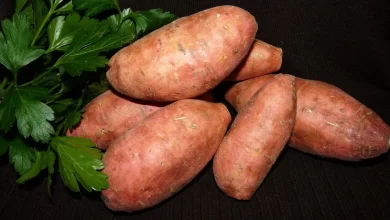Oranges are among the world’s most popular fruits. It is Also called sweet oranges; they grow on orange trees and belong to a large group of fruits known as citrus fruits. The fruit comes in many different varieties and all taste a little different from each other. Oranges have many uses in our daily activities, but orange juice is the most popular almost everywhere in on the planet.
- Oranges were originated in the southeast Himalayan foothills, in a region including the eastern area of the Assam region of India, northern Malaysia, and western Yunnan region of China.
- Orange is the biggest citrus fruit on planet earth.
- Orange is, in reality, just a left-handed lemon.
- Oranges and lemons smell different due to chemically identical molecules that are mirror images of each other.
- The bigger the orange, the higher is its sweetness.
- It is estimated that 50 glasses of water is needed to make one glass of orange juice.
- There are about 600 varieties of oranges grown worldwide but are categorized into two main categories, i.e., sweet and bitter orange.
- The juicy fruit is an excellent source of vitamin C. One orange offers about 116.2 percent of the daily values of Vitamin C.
- Burger King eating joints serve over 400 million ounces of orange juice in the form of minute maid annually.
- Once an orange is picked from the tree, it cannot further ripen.
- The oranges can be harvested only after 3 to 4 years after planting.
- An average-sized tree can produce 40-50 oranges a year and can reach a height of over 30 feet.
- An orange tree can produce the fruit for around 15 to 20 years.
- Orange is the king among all citrus fruits. The other citrus fruits are mandarins, lemons, and grapefruit.
- The pH of orange is 3.0 to 4.0, which is moderately acidic.
- Navel oranges got their name because the bottom of this type of orange resembles a belly button or navel.
- In the year 1565, In St. Augustine, Florida, the first orange trees were planted. So that was the year when oranges were first grown in the United States.
- About 70 percent of total orange harvesting in the United States happens in Florida. The state also exports oranges to overseas markets that include Canada, Japan, France, and United Kingdom.
- Eating too many oranges can lead to some uncomfortable side effects. When eaten in excess, the greater fiber content gives an adverse effect on digestion, can cause abdominal cramps and can also lead to diarrhea.”
- Brazil is the biggest producer of oranges on the planet, with a production of around 15.62 million metric tonnes. The second-biggest producer in the United States.
- The global production volume in the year 2019/2020 amounted to about 46.06 million metric tonnes.
- According to the statistics, the European Union is the biggest consumer of orange juice with 693,010 metric tonnes. The second biggest consumer is the United States, and the third is China.
- Orange has numerous health benefits. It promotes a healthy immune system, Prevents skin damage, keeps blood pressure check, lowers cholesterol, controls blood sugar level, improves eye health, and alkalizes your body.
- The largest orange ever recorded measured 63.5 cm (25 inches) of the circumference at its widest point. It was harvested on 22 January 2006 and grew in the garden of Patrick and Joanne Fiedler in Fresno, California, USA.
Nutrition Facts of Orange
Here are the nutritional profile of one medium orange weighing 131g.
- Calories: 61.6
- Fat: 0.16g
- Potassium: 237 milligrams
- Carbohydrate: 15.4g
- Sugar: 12.2 g
- Protein: 1.23g
- Vitamin C: 92.93% for females and 77.44% for males DV
- Thiamin: 10.36% of DV
- Folate: 9.83% of DV
- Fiber: At least 9.34%, depending on age and sex of DV
- Calcium: Between 4.36% and 5.24% of DV
- Potassium: 5.04% of DV






